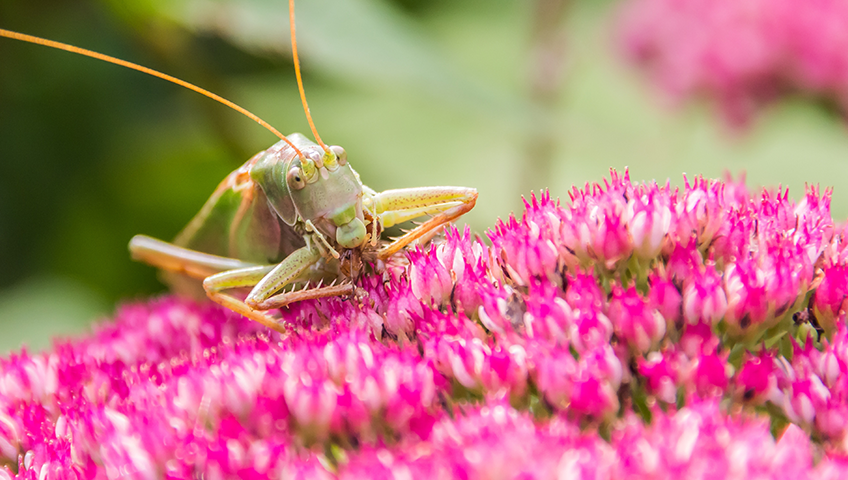Understanding What Bugs Eat
Insects, often referred to as bugs, have diverse diets that vary significantly across species. Their feeding habits are influenced by their evolutionary adaptations, ecological roles, and nutritional requirements. This article explores the various types of diets insects consume, their nutritional needs, and the implications for both ecosystems and human food sources.
Types of Insect Diets
- Herbivorous Insects
- These insects primarily feed on plant material. They can be further categorized into:
- Folivores: Eat leaves (e.g., caterpillars).
- Frugivores: Consume fruits (e.g., fruit flies).
- Nectivores: Feed on nectar (e.g., bees).
- These insects primarily feed on plant material. They can be further categorized into:
- Carnivorous Insects
- Carnivorous insects prey on other animals. This group includes:
- Predators: Actively hunt other insects (e.g., ladybugs).
- Parasitoids: Lay eggs in or on a host (e.g., parasitic wasps).
- Carnivorous insects prey on other animals. This group includes:
- Detritivorous Insects
- These insects feed on decomposing organic matter, playing a crucial role in nutrient cycling (e.g., dung beetles).
- Omnivorous Insects
- Omnivores consume both plant and animal matter, allowing them greater dietary flexibility (e.g., cockroaches).
Nutritional Requirements
Insects require a balanced diet that includes proteins, carbohydrates, fats, vitamins, and minerals. The specific needs can vary based on life stage and environmental conditions.
- Proteins and Amino Acids: Essential for growth and development. Different species have varying requirements for essential amino acids.
- Carbohydrates: Provide energy; many herbivorous insects rely heavily on carbohydrates from plant sources.
- Fats: Important for energy storage and cellular functions.
- Vitamins and Minerals: Vital for various metabolic processes.
Feeding Mechanisms
Insects have evolved various feeding mechanisms to exploit their food sources:
- Chewing Mouthparts: Used by herbivores to grind plant material.
- Sucking Mouthparts: Found in nectar-feeding insects like butterflies and mosquitoes.
- Sponging Mouthparts: Used by flies to lap up liquids.
Behavioral Adaptations
Insects exhibit complex behaviors to balance their diets:
- Nutritional Geometry: Insects can adjust their intake based on nutrient availability, often choosing complementary foods to meet their dietary needs.
- Foraging Behavior: Many insects use sensory cues (sight, smell) to locate food sources rich in necessary nutrients.
Ecological Impact
Insects play critical roles in ecosystems:
- Pollination: Many insects are vital pollinators for flowering plants.
- Decomposition: Detritivores break down organic matter, recycling nutrients back into the soil.
- Food Web Dynamics: Insects serve as a primary food source for many animals, influencing population dynamics across ecosystems.
Edible Insects and Human Consumption
The consumption of insects by humans, known as entomophagy, is gaining attention as a sustainable protein source. Edible insects are rich in protein, healthy fats, vitamins, and minerals.
Nutritional Benefits of Edible Insects
| Nutrient | Comparison with Traditional Meat |
|---|---|
| Protein | Higher than beef |
| Fat | High in unsaturated fats |
| Vitamins | Rich in B vitamins |
| Minerals | Higher iron content than beef |
Edible insects are not only nutritious but also require less land and water compared to traditional livestock farming.
Frequently Asked Questions (FAQ)
1. What do most bugs eat?
Most bugs eat a variety of foods depending on their species; common diets include plants, other insects, or decomposing organic matter.
2. Are all bugs edible?
Not all bugs are safe to eat; some may be toxic or unpalatable. It’s essential to identify edible species properly.
3. How do bugs contribute to the ecosystem?
Bugs play crucial roles in pollination, decomposition, and serving as food for other animals, maintaining ecological balance.
4. Why should we consider eating bugs?
Eating bugs can provide a sustainable source of protein with lower environmental impact compared to traditional livestock.
5. How can I incorporate bugs into my diet?
Bugs can be consumed in various forms such as snacks (roasted crickets), protein powders, or incorporated into dishes like stir-fries or baked goods.
Conclusion
Understanding what bugs eat provides insight into their ecological roles and potential benefits for human nutrition. As the world faces challenges related to food security and sustainability, exploring insect diets could pave the way for innovative solutions in both agriculture and culinary practices.For further reading on insect nutrition and dietary habits, you can refer to FAO’s report on edible insects .






More Stories
Where to Watch USMNT vs Jamaica National Football Team
How I Met My Monster
How Should a Ring Fit